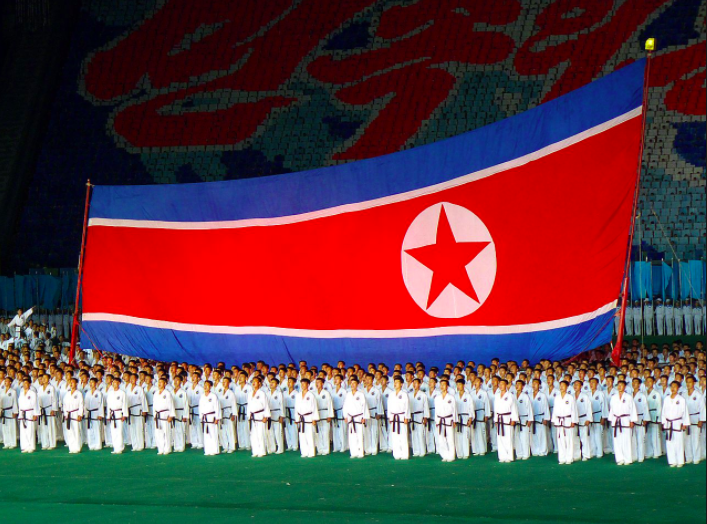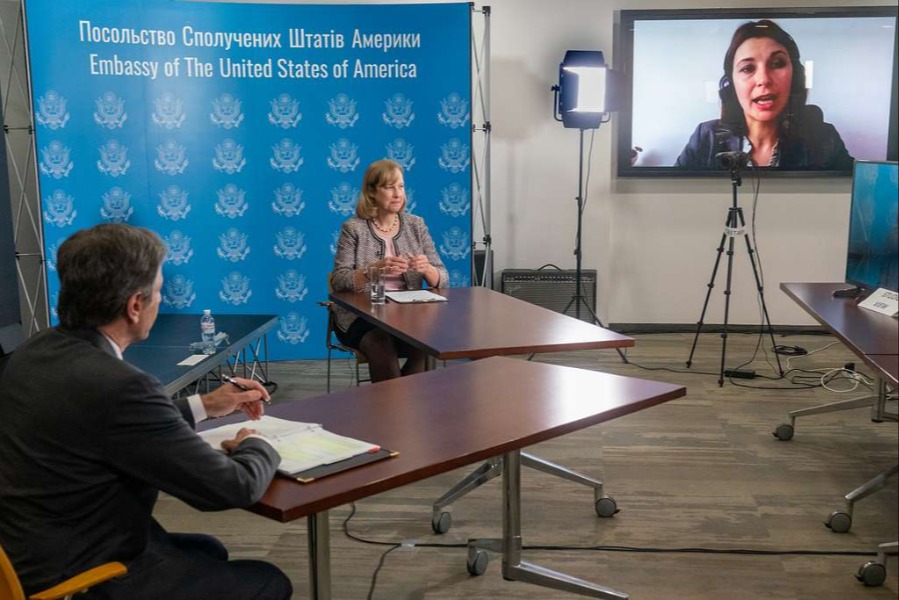Published by The Lawfare Institute
in Cooperation With

This post is the second of three essays on addressing the crisis with North Korea. Read parts one and three.
Yesterday, I argued that the most realistic way to resolve the crisis with North Korea was for China to extend its nuclear deterrent to North Korea. When I first made this proposal in two Time magazine articles in October, commentators asked: Why would North Korea be interested? I address this question below. Tomorrow, I will explain why China would undertake such a policy.
As best as we can surmise, North Korea’s logic rests on the rationale that fully-tested nuclear capabilities will ensure the safety of the regime. Kim Jong Un, looking at Libya and Iraq, might conclude that Muammar Qaddafi and Saddam Hussein would have remained in power today had Libya and Iraq developed deliverable nuclear weapons. That’s because there would have been nothing of such value to the Americans in a regime change for Libya and Iraq that could have possibly persuaded the U.S. to risk—or suffer—the deaths of millions of people: not oil, not imperial hubris and certainly not a desire to vindicate human rights or develop democracy.
It’s true that even without nuclear warheads and long range ballistic missiles, North Korea could still threaten millions of persons in Japan and South Korea, two of America’s closest allies. But that threat might not deter the U.S. from seeking regime change in North Korea owing to the notorious problem that bedeviled our alliances in the Cold War—the possibility that the mere threat to damage U.S. allies would be insufficient to deter the U.S. from a surprise first strike against the Soviet Union or China. Therefore, Pyongyang has developed the capability to deploy hydrogen fusion warheads launched with long range ballistic missiles that could, without anything like pinpoint accuracy, destroy a number of U.S. cities. From Kim’s perspective, the North Korean regime will be safe and its leadership dynasty can rest easy once testing confirms these capabilities.
The error embedded in this reasoning is so devastating, however, that once North Korea realizes it—if indeed they ever do—the regime will also realize that unless urgent steps are taken to defuse the situation, Pyongyang has by its own strategy almost certainly sealed its doom.
Here’s why: As long as only American allies—like South Korea and Japan—were threatened by North Korea, there was no urgent need for the U.S. to act and remove the Kim regime. After all, many things could have happened—revolution in North Korea, a coup by China-sponsored internal dissidents, or the rise of a Kim descendant who gives priority to economic growth and international trade—that would have removed the regional threat posed at present by North Korea without a huge casualty event in the region. And so, despite the urgings of former National Security Adviser Brent Scowcroft and former diplomat and Undersecretary of State Arnold Kanter in 1994, and Secretaries of Defense William Perry and Ashton Carter in 2006, the U.S. has been content to let things drift along. Nothing much was lost by this wishful thinking, and much catastrophe was avoided. But now, things are changing. Whether by design or miscalculation, by the regime or by some rump faction, by the North Korean state or by other states or non-state actors who buy or barter for North Korean weapons, the U.S. homeland has been brought into play. Now, there is a compelling incentive for the U.S. to surge the development of its damage limitation capabilities, i.e., its capacity to attack North Korean offensive capabilities in order to limit their ability to inflict retaliatory damage on the United States.
At present, North Korea’s policy rests on a total acceptance of the “deterrence assumption,” the assumption that a state’s nuclear weapons render credible the threat to utterly destroy another state, such that any other state contemplating an attack will be wholly dissuaded from destroying the state possessing such weapons. Already, however, changes in technology—derived from the revolution in rapid computation that is if anything accelerating—promise to decisively erode the premise of survivability that underlies this assumption. Techniques like hardening and concealment are rapidly being made obsolete by advances in accuracy, detonation timing and remote sensing devices. New guidance systems, rapid data processing and communication, artificial intelligence and many of the by-products of the computer revolution are driving this development. Absent the new North Korean threat to the American homeland, the U.S. might well forgo the pursuit of such damage limiting capabilities because the acquisition of this capacity brings with it other risks (like launch-on-warning protocols by its targets), but Pyongyang’s new threats change that calculus. The North Korean arsenal is now both very deadly to the U.S. and very small—and thus also very vulnerable.
As a result, at present the future of the North Korean regime is sealed: in the short run, Pyongyang will arm as quickly as possible and make threats as dire as it can conceive, but even without war in the immediate time frame, which would certainly destroy the Kim dynasty, North Korea is living on borrowed time. Two bits of jargon are helpful here: “decoupling” is the refusal to use U.S. weapons on behalf of U.S. allies out of fear of retaliation against the American homeland, e.g., the fear during the Cold War that the U.S. deterrent would become detached (“decoupled”) from the extended, non-homeland, theatres in Europe and Asia it protected; “uncoupling” reflects the fear that the U.S. would in an actual war lower the risk to the U.S. homeland by confining its nuclear retaliation to the extended theatre (“fighting to the last German,” it was sometimes said, in case of Soviet invasion of West Germany where the use of U. S. nuclear weapons was limited to attacking the invading force. Eventually the U.S. will strike North Korea’s war-making machine because the nuclear scenario will have shifted from “decoupling” to “uncoupling.” That is, North Korea’s threat to the U.S. homeland will drive the American will to accept considerable risks to her allies in order to neutralize that threat.
Only one maneuver can save North Korea—the acquisition of a credible nuclear guarantee by Russia or, much more likely, China. Their arsenals are of very different sizes—China’s being much smaller and more vulnerable but in either case, it is scarcely conceivable that the U.S. would risk nuclear retaliation just to rid the world of the Kim regime. The difficulties are twofold: the first lies in persuading North Korea that its negotiating strength is at its apogee now—for the reasons I have given—and that its peril will only grow in the absence of such a guarantee. The second is persuading China, which has a no-first use policy regarding nuclear weapons, to adopt a program of extended deterrence to protect its fractious and unpredictable neighbor. Nor is it obvious that the U.S. leadership has the will to press for such an imaginative but counterintuitive policy. (“Let me get this straight: You want to encourage the Chinese to make nuclear threats against us? Whose side are you on?”)
But in fact, not only is this a way out of the current crisis—and one that, with the adoption of other policies like the mutual renunciation of reunification by the Koreas—it can eventually lead to a denuclearization of the peninsula. This approach is infinitely better than the policies we are currently pursuing. Those policies are either weak and ineffectual, or dangerous and self-destructive, or both. The current policy is two-pronged: a diplomatic effort to persuade China to induce, by offering economic incentives, the North Korean regime to denuclearize. This is a hopeless effort because that regime has already decisively rejected a policy of economic growth based on close cooperation with China in favor of a policy of putting North Korea on a war footing vis-à-vis the U.S. Furthermore, this diplomatic tactic makes the U.S. look weak because we are undertaking the role of supplicant to the Chinese, who have no more than a modest incentive to help us out of our problem. The second prong consists in making threats against the North Korean regime that we cannot possibly mean but have the unintended consequence of confirming the message with which Kim has saturated his society, that North Koreans are under a dire and imminent threat of U.S. attack. (This is why the North Korean propaganda machine trumpeted, rather than suppressed, President Trump’s threats to unleash “fire and fury like the world has never seen,” and to “totally destroy North Korea.”) Moreover, such threats unnerve the publics of our allies in the region and discredit those political elements that support an alliance with the U.S. And, finally, it is always possible that in such an atmosphere, a stray airliner or North Korean missile launch that goes awry might trigger a regional holocaust. As with so much of U.S. current policy, this two pronged pursuit of tactics that have failed, without exception for three decades, derives from a failure of purposeful strategic planning. The basis of our concern in the region is not to weaken North Korea or China but to strengthen our alliances with South Korea and Japan. The current policy has just the opposite impact, making the U.S. look feckless and menacing at the same time.






